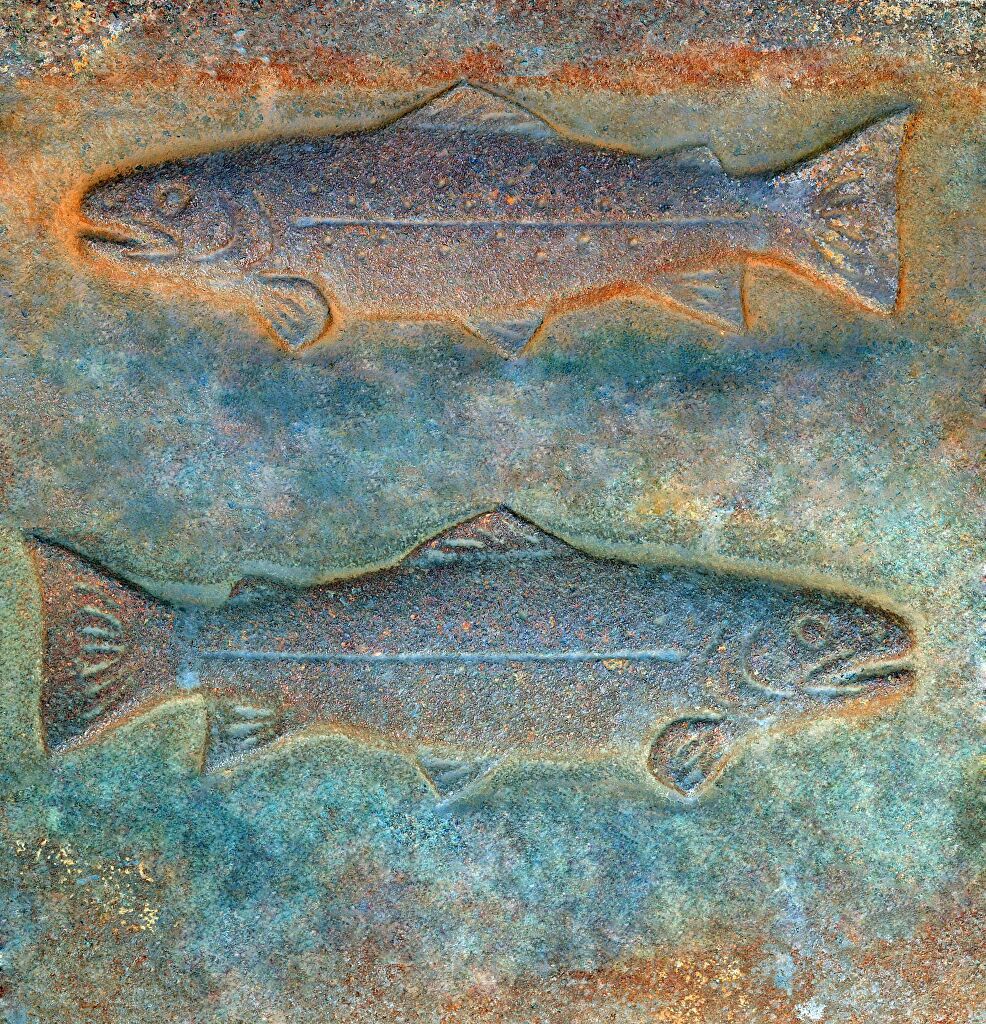About the Artists
Macro-photography that Captures Sunshine in Environmental Street Gratings: Limited Edition Prints that Nourish and Inspire
GOLDEN HOUR TROUT comes from a close artistic collaboration between Duncan & Carla Brown.

Duncan H. Brown, MA (MIU) has pursued photography as a hobby since High School, and as fine art since 2012. He is an instructor at Loyola University Chicago Stritch School of Medicine, co-leading the elective MDED-400: Physician Wellness through the Transcendental Meditation Technique. The elective helps students eliminate stress and anxiety, and increase mental focus.dapibus leo.
Carla L. Brown, EdD (Harvard) has a BA in Fine Art (photography, sculpture and painting). She is an Adjunct Faculty member at Loyola University Chicago Stritch School of Medicine, co-leading the elective above along with Duncan and with Richard Carroll MD and Gregory Gruener MD.


The Environment
Street gratings drain excess water from streets: adding fish sculptures to those gratings conveys a powerful environmental message. Next to each fish, it says, “DUMP NO WASTE” and “DRAINS TO WATERWAYS”. The trout sculpture reinforces the message.
Trout are to waterways as canaries are to mine shafts. Trout will only live and thrive and survive in waterways containing pure, unpolluted water. You know a stream or river or lake is alive if there are trout in it. (There’s a stream 1/10 of a mile downstream from the above grating that contains live trout.)
Golden Hour & Trout
The light just after dawn and just before sunset is unique. Artists and photographers call it “Golden Hour” or “Magic Hour” because colors during these time are richer and more beautiful. Ancient texts suggest that walks in this light provide upliftment and peace of mind. This is why Duncan is out only at dawn or sunset with his camera “fishing” for Golden Hour Trout.
Interesting fact: living trout in real streams are most active, closer to the surface, and prefer feeding during Golden Hour. Trout fishermen know that’s the best time of day to be standing next to a stream, fishing pole in hand.
The color you see in the images of the fish are reflections of the dawn and sunset light in the cast iron. Cast iron is a fascinating substance with interesting reflective properties. In the right conditions (think Golden Hour), it reflects a rainbow of colors.
Duncan tightly controls color in his photography, measuring the “color temperature” of the light and setting his camera accordingly before each shooting session. The colors in the finished images are “brought up”, but they are not added or changed. (An image that has greens and yellows, started those same colors in the sunrise or sunset.)


Different Days, Different Moods
Each Golden Hour Trout is its own universe—during seasons and years of change each develops a unique patina. Further, the LOOK of that patina is changeable based on weather, exact time of day and season. Several fish in the exhibit are seen in multiple images; these show just how different they can appear. The trout are three-dimensional sculptures. Cast iron has 18 oxides and hydroxides which propel its metamorphosis.
Monet’s Haystacks are another example of an artistic subject which changes in mood and coloration under different conditions. The names for each Golden Hour Trout image were inspired by Monet’s titles for his Haystack paintings: he noted weather effects, time of day and, sometimes, the season in their names.
Trout are to waterways as canaries are to mine shafts. Trout will only live and thrive and survive in waterways containing pure, unpolluted water. You know a stream or river or lake is alive if there are trout in it. (There’s a stream 1/10 of a mile downstream from the above grating that contains live trout.)